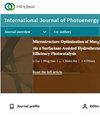建筑信息模型辅助装配式住宅设计阶段碳排放影响评价——以中国某建筑为例
IF 2.1
4区 工程技术
Q3 CHEMISTRY, PHYSICAL
引用次数: 2
摘要
建筑业是能源密集型和劳动密集型行业,在减少能源需求和碳排放方面具有巨大潜力。场外预制构件的施工方法具有许多优点,可以很好地替代传统方法。本文的目的是通过提高建筑设计阶段预制构件的标准化率来减少装配式住宅混凝土构件的碳排放。此外,本文还利用建筑信息建模技术建立了Revit模型,并使用C#语言开发了Revit,实现了对建筑预制率和构件标准化率的快速计算。案例计算结果表明,在设计阶段,碳排放量减少了2034.16 kg CO2e,占所有预制构件碳排放量的0.1552%。这项研究可以帮助设计师减少预制构件的碳排放,这项技术可能会对提高装配式建筑的环境可持续性做出重大贡献。本文章由计算机程序翻译,如有差异,请以英文原文为准。
Building Information Modeling Assisted Carbon Emission Impact Assessment of Prefabricated Residential Buildings in the Design Phase: Case Study of a Chinese Building
The construction industry is energy-intensive and labor-intensive, which has great potential in reducing energy demand and carbon emissions. The construction method of off-site prefabricated components has many advantages to make it a good substitute for traditional methods. The purpose of this paper is to reduce the carbon emissions of prefabricated residential concrete members by improving the standardization rate of prefabricated components in the architectural design stage. In addition, this paper also uses building information modeling technology to establish Revit models and develops Revit using C# language to achieve rapid calculation of the prefabrication rate of building and standardization rate of components. The calculation results of the case show that, in the design stage, the carbon emissions are reduced by 2034.16 kg CO2e by improving the standardization rate of prefabricated components, accounting for 0.1552% of the carbon emissions of all prefabricated components. This study can help the designer reduce the carbon emissions of prefabricated components, and this technology may make a significant contribution in improving the environmental sustainability of prefabricated buildings.
求助全文
通过发布文献求助,成功后即可免费获取论文全文。
去求助
来源期刊
CiteScore
6.00
自引率
3.10%
发文量
128
审稿时长
3.6 months
期刊介绍:
International Journal of Photoenergy is a peer-reviewed, open access journal that publishes original research articles as well as review articles in all areas of photoenergy. The journal consolidates research activities in photochemistry and solar energy utilization into a single and unique forum for discussing and sharing knowledge.
The journal covers the following topics and applications:
- Photocatalysis
- Photostability and Toxicity of Drugs and UV-Photoprotection
- Solar Energy
- Artificial Light Harvesting Systems
- Photomedicine
- Photo Nanosystems
- Nano Tools for Solar Energy and Photochemistry
- Solar Chemistry
- Photochromism
- Organic Light-Emitting Diodes
- PV Systems
- Nano Structured Solar Cells

 求助内容:
求助内容: 应助结果提醒方式:
应助结果提醒方式:


